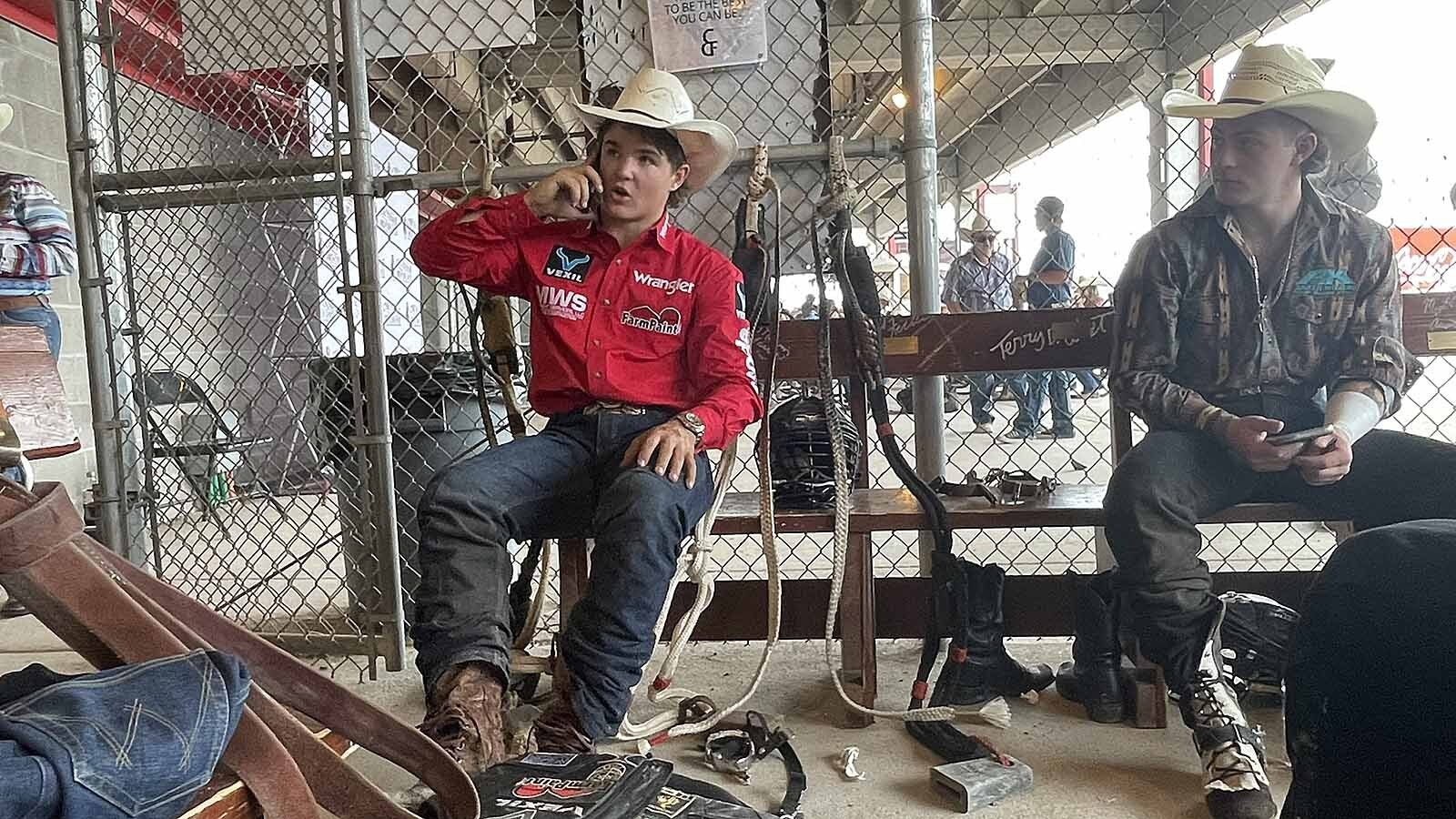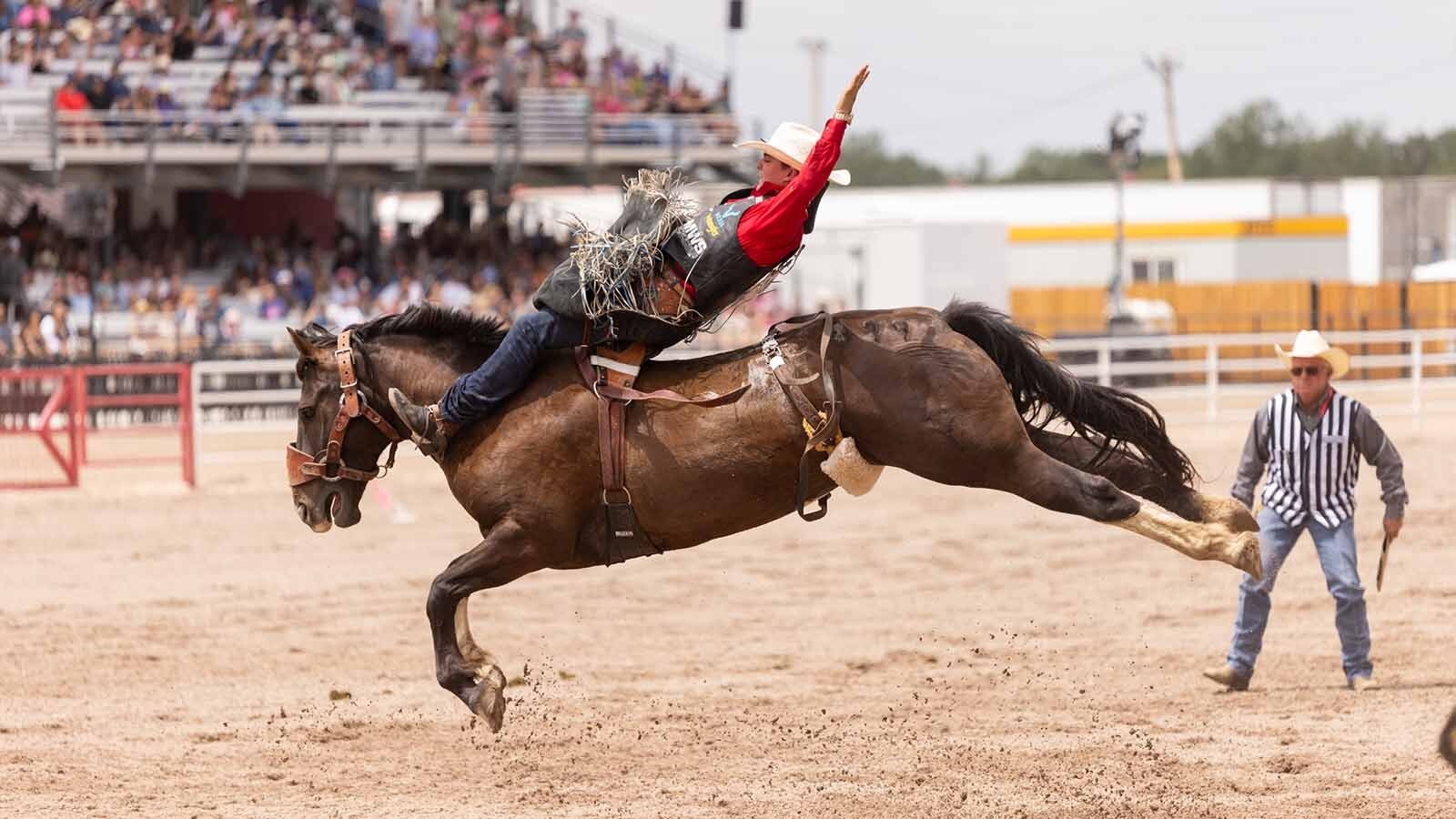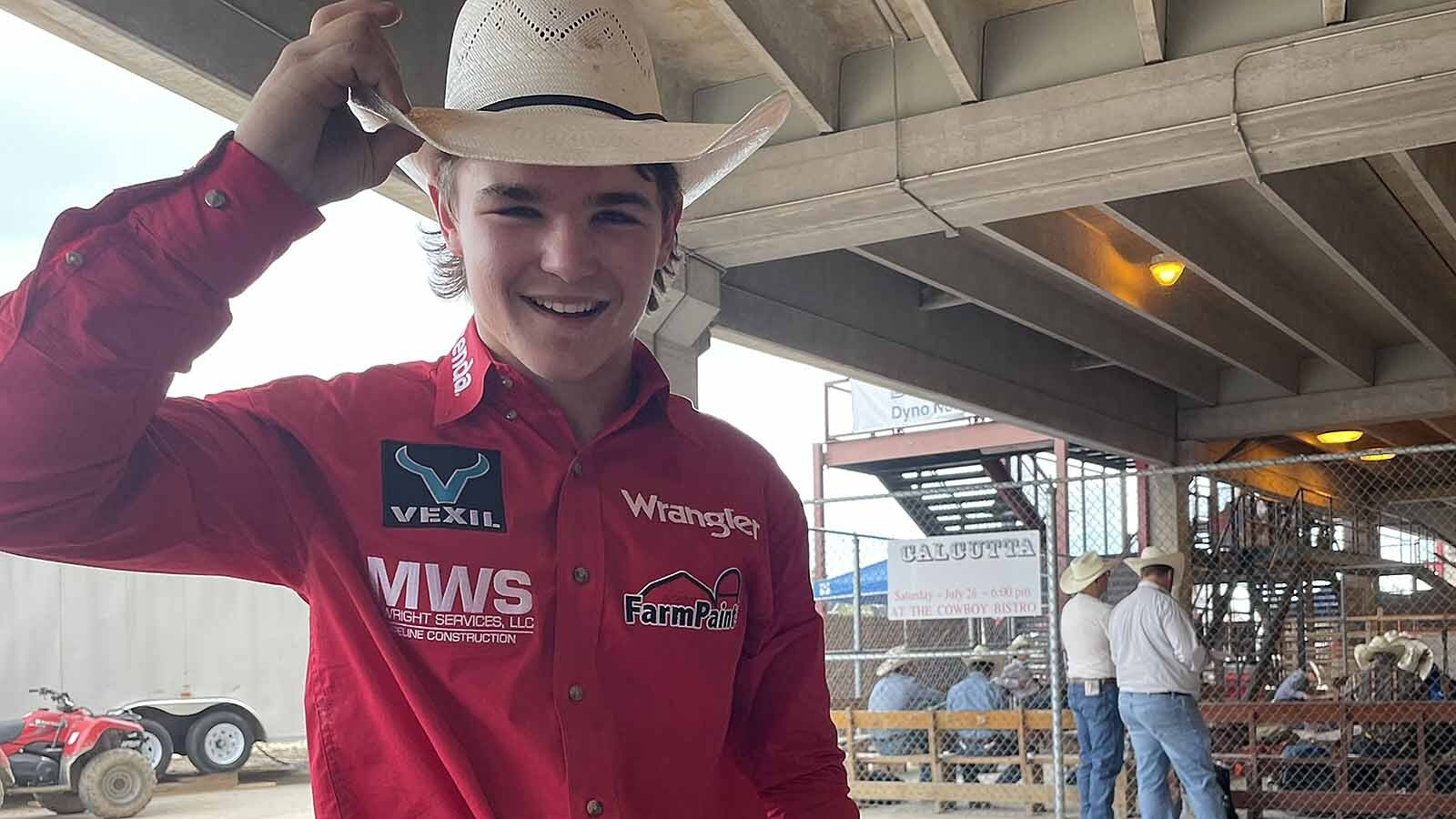Bull riders have been competing at the Cheyenne Frontier Days rodeo for close to a century.
But they arrived this year in a moment when rodeo, and the wider Western culture for which it stands, has never been more mainstream, as the nation appears enthralled with anything to do with the American West.
The popular “Yellowstone” television series has triggered spin-offs quicker than a six-shooter. Country music’s influence has boot-scooted into every music genre. Western fashion is trotting down designer runways, and it’s no longer uncommon to see cowboy boots and George Strait hats out for a walk in Brooklyn.
It’s not the first time, but this go-round may be different.
“We saw something like this before, back with ‘Urban Cowboy,’” said Cody Custer, world champion bull rider and 1999 gold buckle winner at CFD. “There was a big surge in Western lifestyle. The honky-tonks got big, bull riding got big, and then it faded out.
“But I don’t think it’s going anywhere this time. It’s not just a fad. I think it’s dang sure here to stay.”
Bull riders, embodying values like grit, self-reliance and bravery, may well be the purest distillation of the Western male archetype. But that doesn’t mean that they have to look like grown men.

No. 1 Spot
At the top of bull rider rankings today stands a man named Wacey Schalla, who despite his masculine profession, doesn’t yet have a whisker of facial hair.
Schalla is 19, but in the right light could pass for 12, which gives the very-adult Rolex Submariner on his wrist a kind of subversive quality, as though it were a symbol of his rebellion against youth.
He has alabaster skin and a sprinkle of adolescent blemishes on his brow. His intense, hooded blue eyes contrast with a shy smile that looks straight out of a high school yearbook.
His demeanor is a blend of ah-shucks humility and fierce self-possession, which aligns for a ranch kid from Oklahoma who’s risen in less than 24 months to the top spot in the top-paying sport in the rapidly ascendant world of American rodeo.
“It’s something I’ve done ever since I was a kid and it’s what I’ve always wanted to do, so I’m living my dream and just taking it day by day,” said Schalla, catching his breath on a bench beneath the Frontier Days grandstands, his face reflective with perspiration from a bull ride just moments earlier.
“To be where I’m at, being able to do what I love, being a mentor to younger kids, seeing all the people who are watching me from home and cheering me on, it's crazy,” he said. “It’s amazing.”
Name Of The Game
The rules of bull riding are straightforward.
Riders qualify for a score if they stay on a bull for eight seconds. They are scored by how much control they maintain and win additional points for style and panache. This can include maneuvers like spurring in which the riders flare their legs away from the bull.
The bulls are also scored based on the vigor of their kicks, spins and body rolls. Riders and bulls are each scored on a scale of 50 for a possible total of 100 points.
If the rules are simple, the sport’s appeal is even more so. It boils down to the tremendous violence of the bulls of the boldness of the men who seek to conquer it.
“We’re talking about a 120-pound cowboy trying to ride and conquer a 1,900-pound animal that's doing everything in its willpower to get him off his back,” said Jason Bain, chairman of the CFD’s Rodeo Committee. “It’s man versus beast.”
These are not your average beasts.
Not Your Average Beast
The modern American bucking bull is the product of decades of tailored crossbreeding between Brahman, Hereford and Angus bull genes. They are stronger, fiestier and buckier than anything before.
It would be impossible to overstate just how intimidating these beasts are.
“There are bulls out there that you know when you draw them, you better get your head on right, get in the zone, block everything else out," said Schalla, alluding to bulls like Rank Frank, an animal that looks like a stack of granite rock spray-painted black.
That afternoon, Schalla prepared to drop onto one of the many bulls he’d ride in the CFD arena. He stood above the chute with an air of life-or-death intensity.
He took deep, methodical breaths, rocked from one foot to the other and fluttered his fingers at his side, like a gunslinger itching to draw.
The gate swung open.
The bull kicked and rolled and spun like a dog after its own tail. It felt as if the heavy metal Metallica song booming from the loudspeakers had been produced with this exact moment in mind.
Schalla covered the eight seconds and tumbled gracefully into the dirt. The crowd erupted.
“I’m rooting for Wacey Schalla. I like his attitude. He seems like a nice young man,” said a woman named Jeannine Jones, dressed to the Western nines and in a high stadium seat.

Injury Guaranteed
Bull riding is called the most dangerous eight seconds in sports.
Analysis shows about 5% of all bull rides end in injury, the highest of any rodeo sport, leaving virtually all top riders with scars to show.
Earlier this year, Schalla was concussed on a bull ride in RODEOHOUSTON in Texas. Three weeks later he was knocked out again and separated his AC shoulder joint on a Bounty Bull ride in Ardmore, Oklahoma.
After a month of convalescence, he remained on the fence about returning to ride, until he saw an opportunity he couldn’t pass up.
“I was still entered [for optional participation], and I got a draw in Red Bluff, California, for a bull called Cherry Bomb,” he said. “He bucked me off at NFR last year. I was still pretty hurt from Ardmore, but I knew I had to go get revenge on that bull.
“I ended up winning Red Bluff, and I decided I can probably still get by riding bulls again. To be able to conquer a bull (that’s) 1,900 pounds, five times as big as us, that’s quite an accomplishment.”
It gives you a window into the mindset of bull riders. They’re driven by primal instinct, burgeoning passion and daredevil's love for a thrill, according to one of the sport's most prominent living icons.

‘Daredevil Mentality’
Cody Custer is the 1992 PRCA World Champion bull rider title winner as well as gold buckle winner from the 1999 CFD.
He was among the original cowboy collective that started the Professional Bull Riders (PBR) association, which is currently being acquired as part of a $3 billion deal by TKO, the parent company of WWE and UFC.
Custer has a soldier-straight bearing, cropped hair and lower lip that slants to one side when he talks. He doesn’t come across as a thrill seeker, but lo and behold.
“Most every guy that rides a bull is a little bit of a thrill seeker. You get a taste of it, the challenge, and that’s what keeps guys going at it,” he said.
“It’s one of the most dangerous things you can do, but if you take it to the extreme such that you're willing to give your life for it … that’s almost the kind of the mentality you have to have, the daredevil mentality,” added Custer. “Because then you’re not thinking about the things that can go wrong, you’re thinking about the things that can go right.”
Schalla is of a similar mind.
“It’s something that fuels my fire, the nerves you get out there, the adrenaline, it pumps me up,” he said. “And it’s something you can’t really explain unless you’re out there doing it.”
Thrill seeking comes at a cost, Custer explained.
“I had shoulder surgeries, I had knee surgeries. Broken jaw. Broken ribs. Collapsed lung. I broke my nose and my thumb and my toe,” said Custer, who views these injuries as a best-case scenario after a 21-year career in bull riding. “Lucky it was nothing major. Didn’t break my legs or arms.”
For rodeo athletes like Schalla, it’s not just bulls that put them in the hospital.

Anomalies
Like athletes at all professional levels, rodeo competitors are increasingly specialized in single events, which is typically to their competitive advantage.
“It’s just like other sports. You don’t see professional football players who are also professional baseball players because it’s become too competitive in each professional sport. It’s the same with rodeo,” said Susan Kanode, public relations specialist with CFD.
Schalla sees it differently. He also competes in bareback riding.
“Today was a lot. I got on my bareback horse, had one event break then got back on my bull,” Schalla said. “Usually, I'm the first and last event and have more time to recover. But not this time.”
The rules in bareback broncing are similar to bull riding, but instead of holding a rope, riders use a custom rigging that looks like a suitcase handle. It’s also different in that it's way more awkward.
If you hear the word bareback and think “Dances with Wolves,” think again. A more accurate depiction would be a man getting rear-ended in a car with no headrest — over and over and over again.
The rhythm of the broncs are faster and choppier than the bulls, and on the whole riders seem to be but men with a penchant for violent whiplash. Alas, these are men we look up to.
“I want to see myself at NFR [National Finals Rodeo] in both events in the future, like one of my idols, Ty Murray,” Schalla said.
Working-Class Athletes
Beyond the arena, the lifestyle is its own grind, because these guys gotta make hay while the sun's shining.
“It’s a money game, but it's also a numbers game,” said Jason Bain, who was one such traveling competitor in his younger years. “They need to think, ‘How do I plan my schedule so I can be in Cheyenne and be in Ogden and be in Salt Lake and be in Deadwood, basically all at the same time,’ because those are all four going on together.”
On the previous day, Schalla competed at rodeo in Salinas, California. From there, he flew to compete that same day at a rodeo in Salt Lake City, before getting in a truck and driving through the night to make the rodeo at CFD.
Cowboys often have traveling partners. Schalla and fellow bull rider Justin Woodward lean on one another in more ways than one.
“When you're on long drives, you don’t want to be on your own,” he said. “Have someone to talk to help you out when you're not doing good, someone to help you keep your head on straight.
“But we also have a little fun. We play golf when we can. We like to find places and go cliff jumping.”
It's a busy schedule that doesn’t allow for much outside social life. Schalla wouldn’t mind a girlfriend, but when’s he got the time for that? As for his type of girl, we ask Schalla, who’s your celebrity crush.
“I wouldn’t mind meeting Lainey Wilson, we’re both sponsored by Wrangler and we’re both carrying on the Western legacy. I think it’d be pretty cool to meet her,” he said, referring to the country music star with a 12-year-old’s blush rising in his cheeks.
If we happen to run into Lainey, what should we tell her for you?
“Oh, gosh, that’s a hard one. I don’t know, I think I’m probably pretty starstruck,” he said.
Schalla went on to win the gold buckle in bull riding at Cheyenne Frontier Days with a monster 91.5-point ride.
Contact Zakary Sonntag at zakary@cowboystatedaily.com

Zakary Sonntag can be reached at zakary@cowboystatedaily.com.




